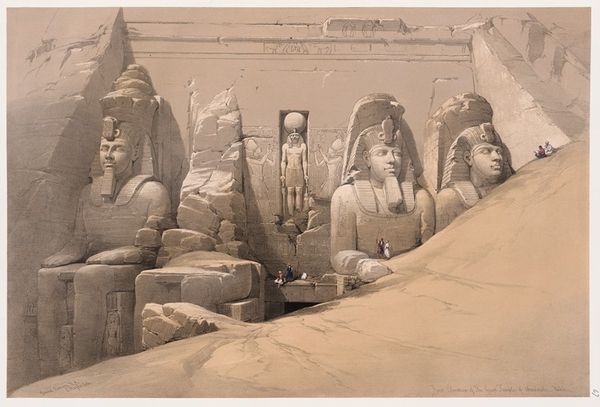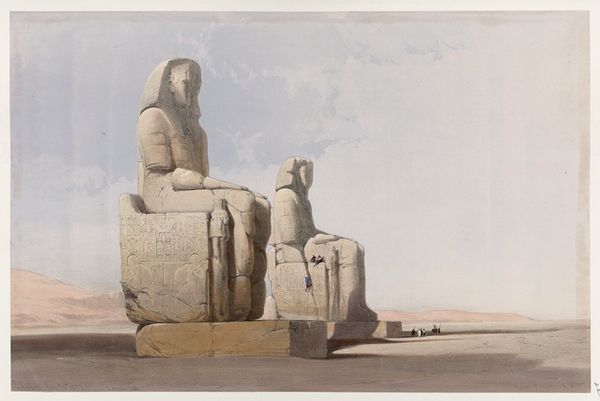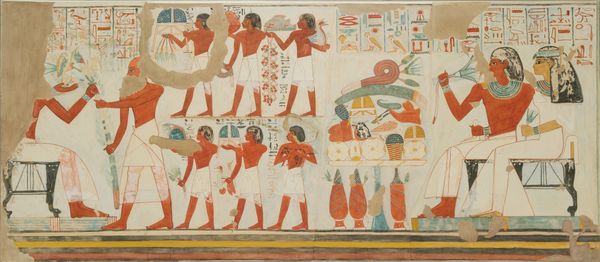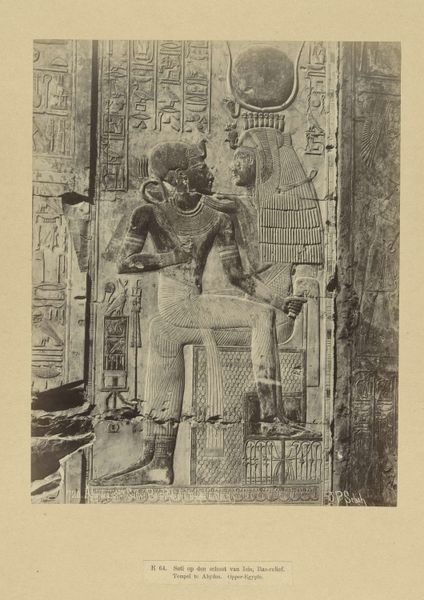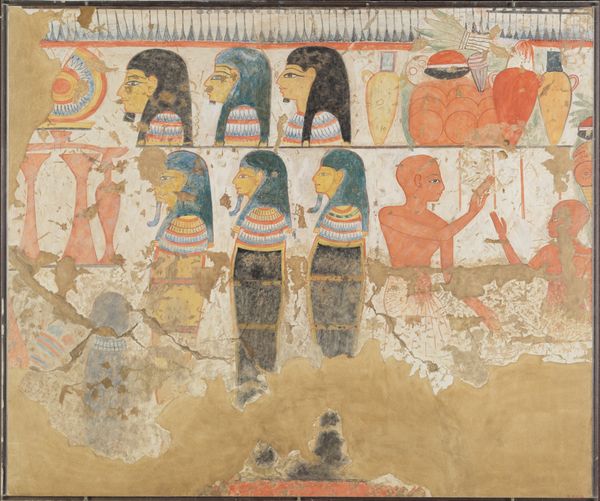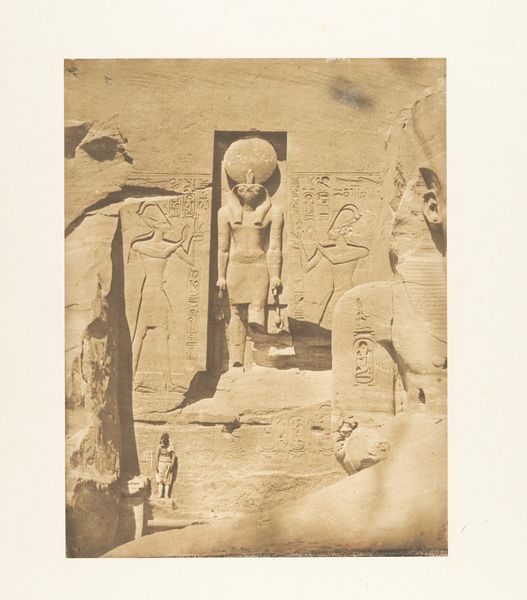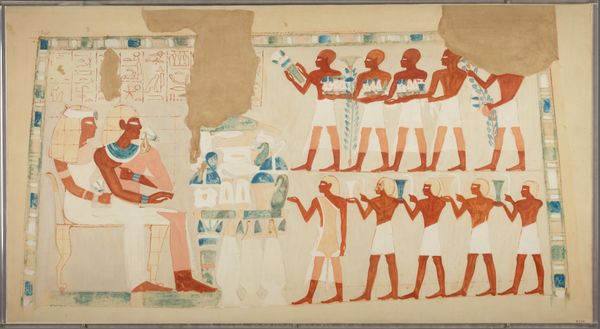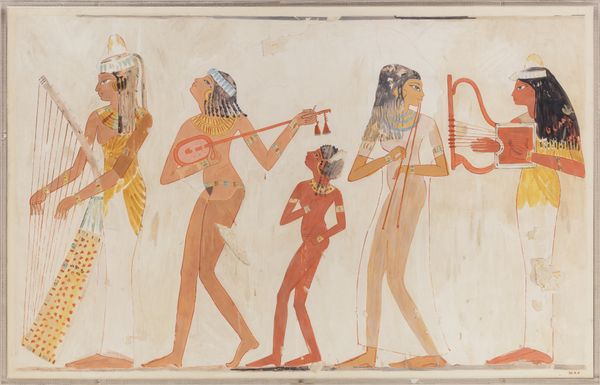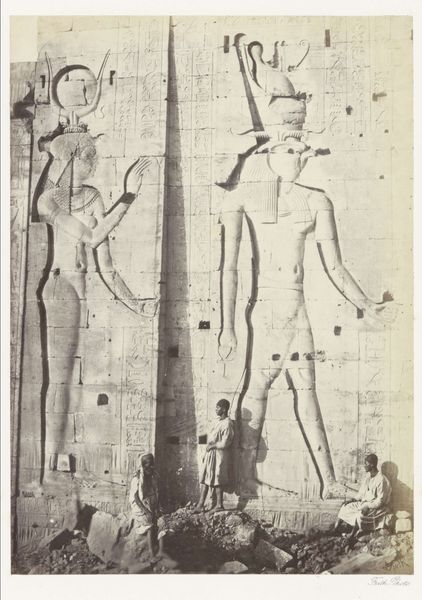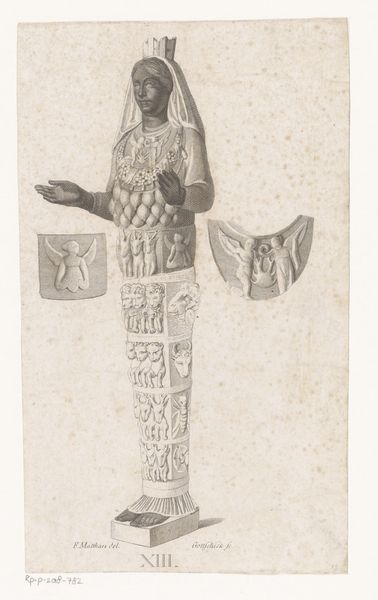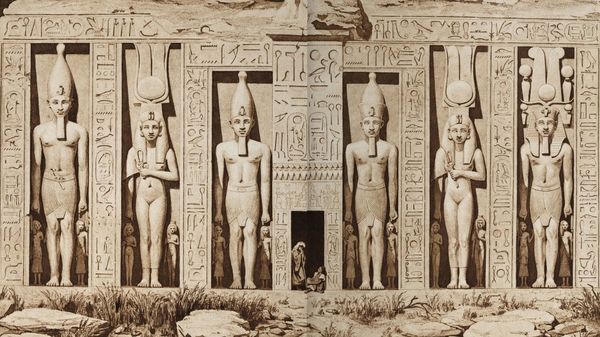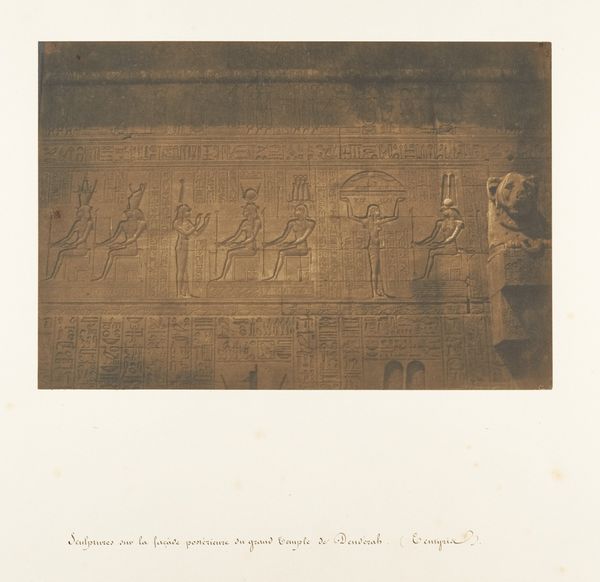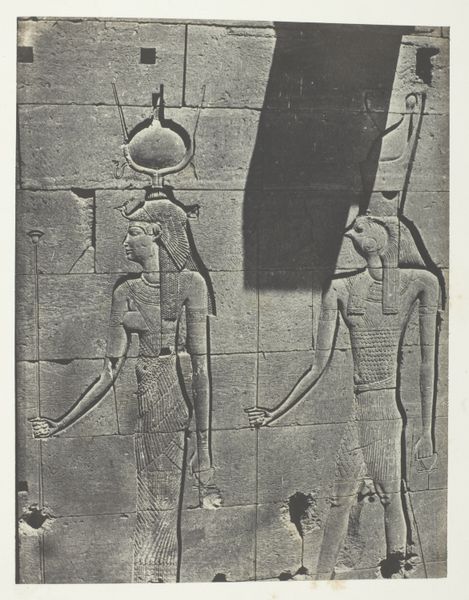
watercolor
#
narrative-art
#
landscape
#
ancient-egyptian-art
#
figuration
#
watercolor
#
ancient-mediterranean
#
watercolour illustration
#
history-painting
#
academic-art
#
watercolor
Copyright: Public Domain: Artvee
Editor: This watercolor is entitled "Sanctuary of the Temple of Aboo-Simbel, Nubia," created between 1846 and 1849 by David Roberts. The figures seem so stoic and imposing even rendered in watercolor. How would you interpret this work, especially considering its materiality? Curator: As a materialist, I immediately look to the context of its creation. Roberts, a Scottish artist, creating this watercolour during the height of Western colonial interest in Egypt, fundamentally shaped this representation. It begs the question: What was his relationship to the materials? Did he source them locally, impacting local economies, or did he import them, emphasizing a Western gaze? Editor: That's a perspective I hadn't considered. How does this relate to the figures depicted? Curator: The statues themselves, frozen in watercolor, are removed from their original stone, their function appropriated. Roberts turns religious artifacts into commodities, reproducible images to be consumed by a European audience fascinated by the "Orient." What labor went into both creating the original statues and Roberts’ rendering? Think of the anonymous hands who toiled on the Temple of Abu Simbel compared to Roberts as an individual 'master.' Editor: So, the medium itself reflects the power dynamics at play during the 19th century. Curator: Precisely! Even the widespread distribution of the finished product—a watercolour reproduction rather than a visit to the physical site—highlights the accessibility of a colonial perspective versus the restricted access and control of the colonised country itself. It makes you reconsider the intended audience, doesn’t it? Editor: Definitely. I had only seen the artwork as a historical record, but it is equally about the colonial gaze through the art supplies and process of the time. Curator: It serves as a powerful reminder that art and its creation are deeply intertwined with material conditions and societal power structures.
Comments
No comments
Be the first to comment and join the conversation on the ultimate creative platform.
